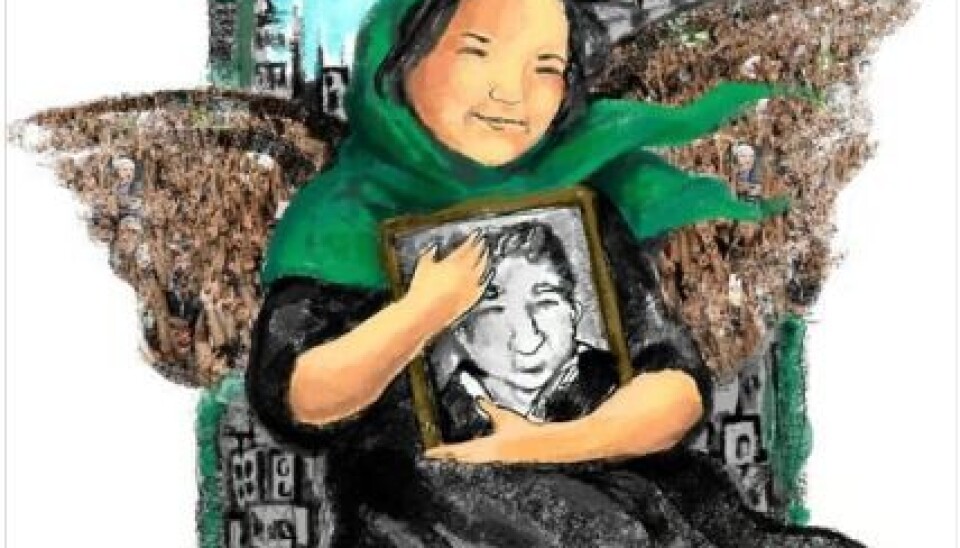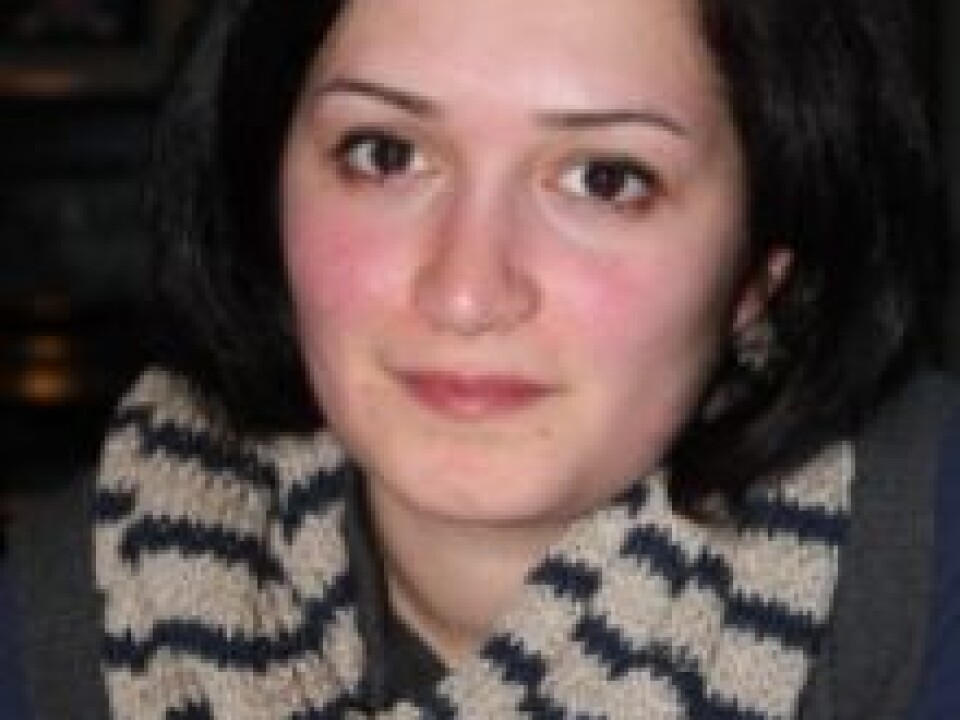An article from KILDEN Information and News About Gender Research in Norway

Martyrs on Facebook
Can a woman be a genuine martyr? Is it a compliment to say to a woman that she is “equal to a thousand men”? Feminist activists in Iran are waging an ideological war on Facebook.
Denne artikkelen er over ti år gammel og kan inneholde utdatert informasjon.
1 June 2011: The Iranian human rights activist Haleh Sahabi follows her father, the long-time opposition leader Ezzatollah Sahabi, to his grave in Teheran.
Haleh Sahabi is actually serving a prison term, convicted of using propaganda against the regime and disturbing the peace, but she has been granted permission to attend her father’s funeral.
The funeral becomes disorderly. Police try to stop the ceremony and, according to eye witnesses, they attack Haleh Sahabi and beat her unconscious.
She dies moments later.

The family is told that the cause of death is cardiac arrest. The authorities order the funeral to be held the same evening, and no autopsy is performed to ascertain the true cause of death.
Battle on Facebook
Only minutes after Haleh’s death, the mobilisation effort begins to draw worldwide attention to Haleh Sahabi and her violent death at the hands of the Iranian regime. Her supporters created the Facebook group called “We are All Haleh Sahabi” to post photos, videos and reports from the funeral and to encourage people to demonstrate.
Gilda Seddighi, a doctoral research fellow at the Centre for Women’s and Gender Research at the University of Bergen, is studying how masculinity and femininity are discussed within the Iranian democracy movement, which is fighting to secularise the Iranian regime. One of the examples she uses is the Facebook group in support of Haleh Sahabi.
“In the past year there have been fewer demonstrations in Iran. The democracy movement is no longer able to bring people out into the streets. Social media make it possible for the opposition to discuss issues among themselves, and this is why these media have become increasingly important,” says Seddighi, who is particularly interested in how social media are used at different levels of political mobilisation.
It’s previously been seen how the Iranian democracy movement drew international attention to the demonstrations and that social media made it possible to conduct transnational campaigns against human rights violations in Iran.
Martyrdom
A battle is being waged on Facebook to confer the status of martyr on Haleh Sahabi. Martyrdom is extremely important in Iran, and has roots dating back to Shia Islam’s early narrative about the martyr Hussein, the grandchild of the Prophet Mohammed.
“During the Islamic Revolution in 1979, the story about martyrdom was retold in terms of a fight to establish an Islamic state,” explains the researcher.
Many women were killed during the 1979 revolution, but only men were hailed as martyrs in the Islamic Republic of Iran. Photos of male martyrs were hung up in the streets to remind people of the battle. The Facebook page for Haleh Sahabi presents her as a martyr.
“The fact that women can also be hailed as martyrs may be the result of women’s active role in civil society in the past decade. It is interesting for me to study how a female martyr is described in social media, where a variety of groups can participate in the discussions,” she says.
Chivalry and masculinity
According to Seddighi, the Facebook group “We are All Haleh Sahabi” combines heroic tales from pre-Islamic history, in which men protected the country, with Shia Muslim martyr narratives. Chivalry, which links honour with masculinity, has become an increasingly central concept. When women are praised for their courage in the opposition’s struggle, they are often described in terms of manliness, such as “You give meaning to masculinity”.
Seddighi believes that the connection between masculinity and honour ties women’s role in the movement to men’s identity. She thinks the reason for this development might be that many feminist activists have been imprisoned since the summer of 2009 and the women’s movement has not had a strong presence in the democracy movement’s media since 2010.
By the same token, the researcher notes that some women are challenging this close association between masculinity, martyrdom and chivalry in the discussions within the Facebook group. For instance, a female participant in the Facebook group wrote the following comment about an article that had been distributed, in which a male politician describes a feminist activity as “equal to a thousand men.”
When one shows respect to a woman by saying that she is more of a man than a real man, you actually disrespect her. You, indeed, deny her female identity. A woman can be brave, and still be a woman. Bravery is not in monopoly of men that you think a brave woman is inevitably a man.
“What is at stake is women’s role in the democracy movement. There is limited cultural material available, and it is therefore very important to ensure that women are not excluded from what is used,” says Seddighi. As a result, it is crucial to emphasise that women can be martyrs without turning them into “men” or describing them as “masculine”.
New generation of male opposition
Seddighi is also interested in the role that young men play in discussions about gender in the new Iranian democracy movement.
“Many researchers have studied and written about women’s movements and feminists, but little work has been done on men, both in Iran and in the Middle East in general," she says.
"As part of my project, I’m exploring the various masculinities that are expressed in Facebook campaigns. Different groups of men express different viewpoints about gender and democracy as well as about strategies that must be implemented in the movement.”
She believes there are many changes taking place which are interesting to follow.
After the revolution in 1979, a generation of men emerged, who seem to view themselves as oppressed. They are often unemployed despite their high level of education. And with the revolution they also have lost their power within the family, since the religious leaders have strengthened their power over both men and women.
“During my fieldwork in Iran in 2008 in connection with another project, I found that many frustrated young men joined the women’s movement to engage in political activism," says Seddighi.
"But this changed when the democracy movement arose in the summer of 2009, when large numbers of people demonstrated against the way the presidential election was run. The new movement gave another platform to young men, and their collaboration with the female activists died out.”
----------------------------------------------------------------
Read this article in Norwegian at forskning.no






























